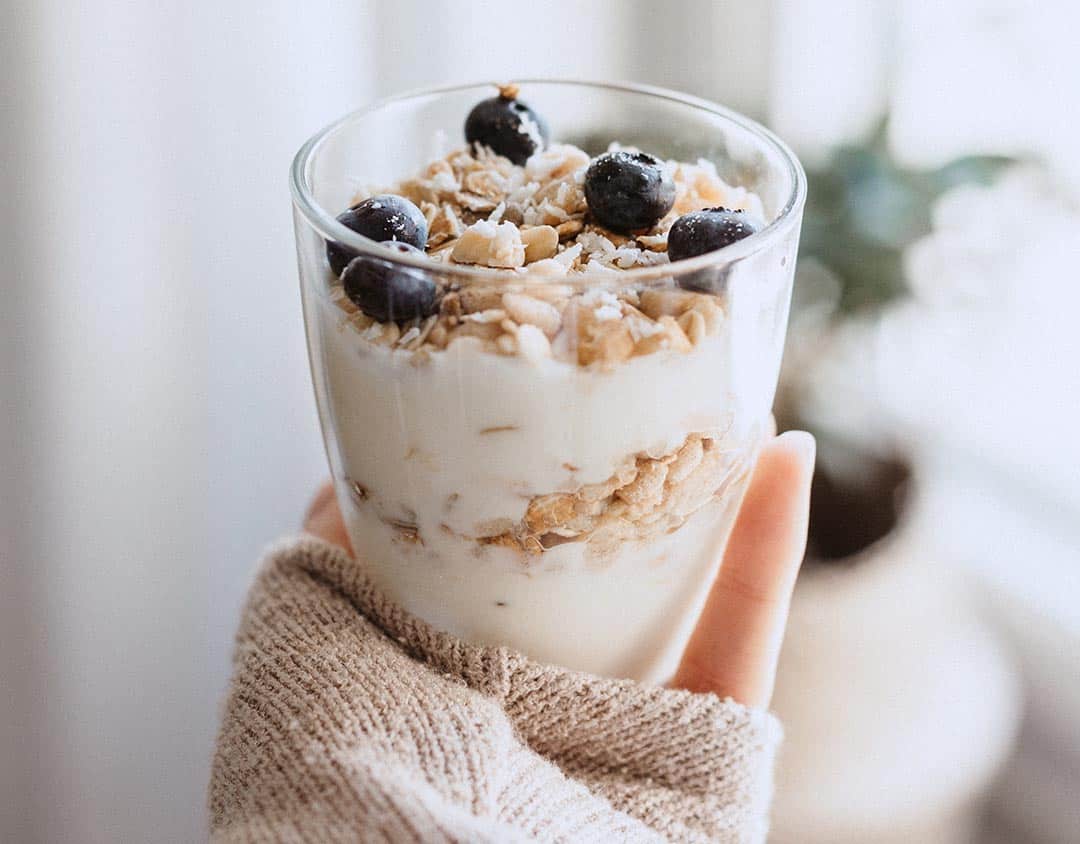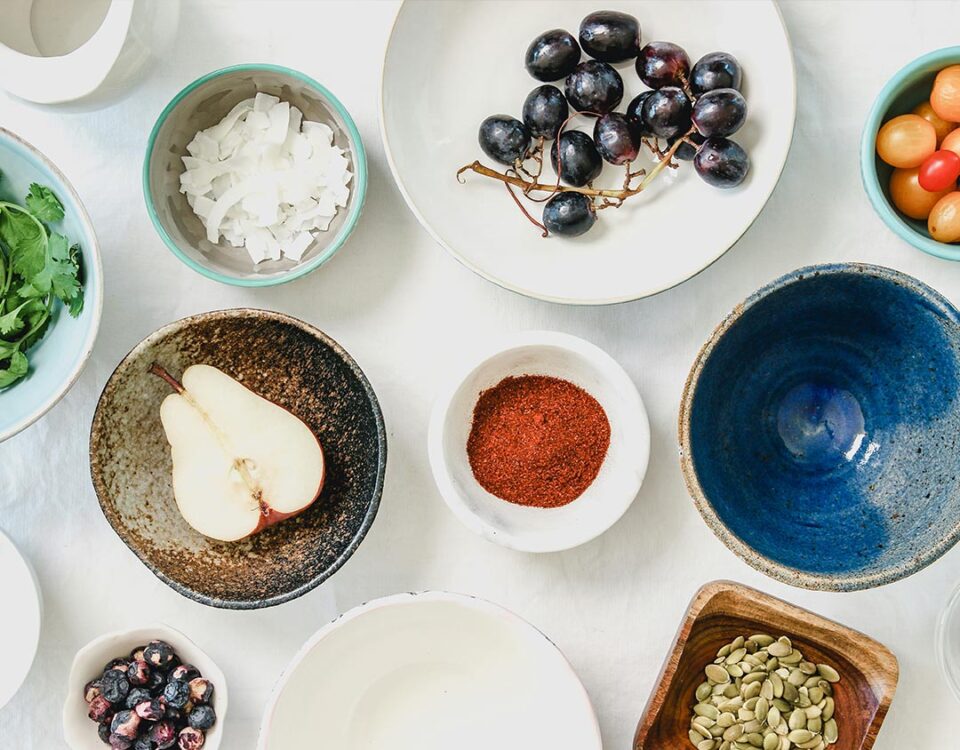
Chocolate Peanut Banana Bites
June 14, 2020
Homemade Bounty Bars
July 5, 2020Proteins perform vital roles throughout our body, so it’s important to consume enough protein from a variety of sources each day.
T here is often a lot of interest in protein amongst my clients, especially when it comes to promoting muscle growth, but protein is involved in so much more than muscle development. Protein is one of the three main macronutrients and is crucial for the overall health of your body. It can be found in a variety of plant-based and animal-based foods. It can also be taken as a supplement, but how much protein do we really need each day and are supplements needed? Why do we need protein for health? Where do we get it from? Should we consume more plant-based or animal-based proteins? Let’s dive into the answers to some of these common questions.

Proteins are the building blocks of many of our tissues. They are made up of repeating units of amino acids.
What are proteins and why do we need them?
Proteins are the building blocks of many of our tissues. They are made up of repeating units of amino acids. These amino acids are used to perform structural and functional roles throughout the body. About 20% of the human body is made up of proteins. They make up our muscles, organs, tendons, hair, nail, skin and bone, they function as enzymes, immune cells, and even hormones. Unlike carbohydrates and fats, our bodies do not store excess protein that we consume. Our bodies cannot synthesize all the proteins we need; therefore, we must get them from our diet on a regular basis. Protein also helps to keep us full for longer after a meal, which allows us to feel more satisfied between meals and snacks.
Where do we get proteins from?
Proteins can be found in both animal sources and plant sources. Animal sources include fish, shellfish, meat, poultry, eggs, milk and milk products. Plant sources include legumes (beans, chickpeas, lentils, soybeans, peas, peanuts), nuts, seeds, and in smaller amounts, grains (e.g. wheat, quinoa, rice).

Animal proteins are often good sources of well-absorbed heme-iron, zinc and vitamin B-12, and can also be a great source of omega-3 fatty acids.
Should I choose plant-based proteins or animal-based proteins?
Animal proteins are often good sources of well-absorbed heme-iron, zinc, selenium, calcium, and vitamin B-12, and can also be a great source of vitamin D and omega-3 fatty acids. Fatty fish, such as mackerel, sardines, and salmon are wonderful sources of omega-3 fatty acids, which help to resolve inflammation in the body. Eggs are super convenient and fantastic sources of many nutrients, such as choline and selenium. Dairy products, such as Greek yogurt, cottage cheese and milk are great sources of calcium. Some sources of animal proteins, such as fattier cuts of red meat (e.g. pork and beef), may be higher in saturated fat which can contribute to elevated cholesterol levels if consumed regularly. Choosing leaner cuts of red meat and poultry can help to reduce saturated fat intake. Processed meats, such as deli meats, bacon, and sausages, are best consumed only once in a while as they are often much higher in sodium and regular consumption may increase risk of disease, such as heart disease and certain cancers.
Plant proteins on the other hand are higher in fibre and antioxidants, and much lower in saturated fats, which may help to reduce cholesterol levels, blood pressure, and overall risk of heart disease and stroke. Beans, chickpeas, and lentils are great sources of folate, manganese, copper and many more nutrients. The higher fibre content may also help to promote a diverse and healthy gut microbiome too! Some people may find that they do not tolerate legumes as they can contribute to increased bloating and/or gas. If you are just getting started and would like to increase your intake of plant-based proteins, I recommend starting slow with a small portion, cooking them well and pairing them with your animal proteins. For example, try a chicken and chickpea curry, or ground beef and black bean tacos. Overtime, your gut will get used to the increased fibre and you may be able to increase your intake.
Whether you are vegan, vegetarian, or an omnivore, most people can benefit from incorporating more plant-based proteins in their diet. The environment will also benefit with decreased greenhouse gas emissions. I recommend including a variety of proteins that align with your ethical and moral values! If you choose to fully eliminate animal products from your diet, be sure to speak with a Registered Dietitian to ensure that you are finding ways to replace some of the key nutrients that may be missing from a vegan diet.


How much protein do I need each day?
Protein needs vary greatly from person to person. Your needs depend on weight, age, activity level/intensity, injuries/infections and overall health goals. When looking at the plethora of protein recommendations online, you’ll see a large variance of anywhere from the Recommended Dietary Allowance (average daily intake needed to meet most people’s needs) of 0.8 g/kg/day and as high as 3.3 g/kg/day on certain body-building websites. It is pretty clear that the majority of us do require more than 0.8 g/kg/day when we take physical activity, fetal growth, injury, or infection into consideration. For mothers in pregnancy or lactation, 1.1g/kg/day of protein is needed. For someone recovering from illness or injury, 1.2-1.5 g/kg/day may be beneficial. For people who engage in endurance sports (e.g. running, cycling), 1.2-1.4g/kg/day is recommended, and for those who engage in strength sports (e.g. weightlifting), 1.4-1.7 g/kg/day is recommended with some sources recommending closer to 1.5-2.0 g/kg/day. It should be noted that intakes higher than 2.0 g/kg/day did not show additional benefits in strength and muscle gain, except for when athletes were restricting their overall calorie intake. It is also important to consider what is realistic for you and your life when it comes to protein goals and intake.
How do I meet my needs?
To keep things simple, start by trying to incorporate a protein source at each meal, about ¼ the size of your meal or plate. By spacing out your protein throughout the day, rather than only having it at dinner time, you’ll not only be more likely to meet your overall protein needs, but it will help keep you full for longer after each meal and give you a wider variety of nutrients throughout the day. Smaller, more regular doses of protein can also help promote muscle protein synthesis more so than one large dose each day.
Here are some examples of how to build protein into each meal and snack:
- Include Greek yogurt, eggs, or nuts/seeds at breakfast
- Incorporate chickpeas or lentils into a curry or soup for dinner
- Add tuna/salmon salad, egg salad, or chicken to your sandwich/wrap at lunch
- Have cheese or nut butter with apple slices for your afternoon snack
- Incorporate tofu, shrimp, beef or chicken in your stir fry at dinner
- Add chickpeas, chicken, tofu, or salmon to your salad at lunch
- Add red lentils, ground beef, shrimp or ground turkey to your pasta sauce
- Add Greek yogurt, cottage cheese, soft tofu or protein powder to your morning smoothie
Written by Joy Tang and Liz Powell, RD
References:
- Hammond. (2020). Proteins Lecture. University of British Columbia.
- Institute of Medicine (US) Committee to Review Dietary Reference Intakes for Vitamin D and Calcium. (1970, January 01). - Dietary Reference Intakes for Calcium and Vitamin D - NCBI Bookshelf. Retrieved June 25, 2020, from https://www.ncbi.nlm.nih.gov/books/NBK56068/table/summarytables.t4/?report=objectonly
- Song, M., Fung, T. T., Hu, F. B., Willett, W. C., Longo, V. D., Chan, A. T., & Giovannucci, E. L. (2016). Association of Animal and Plant Protein Intake With All-Cause and Cause-Specific Mortality. JAMA Internal Medicine, 176(10), 1453. doi:10.1001/jamainternmed.2016.4182





